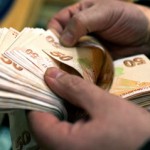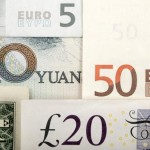Emerging market currencies are recovering

Emerging market currencies are recovering as U.S. Treasury yields and the dollar falls back from the highs that sparked sharp falls across the developing world.
Still, investors expect further volatility for emerging markets, given continued trade tensions between the U.S. and China and uncertainty over global economic growth.
From the end of April to August, the Turkish lira and Argentine peso fell by about 40% and 50% against the dollar respectively. The lira has gained 20% since its August low, while the peso is up 15% since that month. The Mexican peso, Russian ruble and South African rand are also higher, while the Indian rupee’s steep decline appears to have abated.
Emerging market currencies spiraled lower through the summer as U.S. interest rates and the greenback rose, making dollar-denominated debt more expensive and risk-free Treasury yields more attractive. Trade tensions added to the negative conditions, as did domestic troubles in countries like Argentina and Turkey.
But the WSJ Dollar Index, which tracks the greenback against a basket of 16 other currencies, has fallen by nearly 1% since the beginning of October, while the 10-year Treasury yield has fallen back from 3.24% to 3.16% during that period.
“The dollar has been on the back foot against its major counterparts over the past week, with the pullback in the 10-year [U.S.] yield offering support for higher-yielding currencies,” said Kenneth Broux, a currency strategist at Société Générale in a research note on Tuesday.
Investors’ belief that trade tensions between the U.S. and China are easing has also fueled the decline.
For Turkey, the release of U.S. pastorAndrew Brunson last Friday helped send the lira to a two-month high against the dollar on Monday. U.S. sanctions related to Mr. Brunson’s detention on terrorism charges had added further pressure on the lira.
On Wednesday, Turkey was able to issue its first bond since April.
Fund managers remain cautious on the lira, however. Turkish inflation continues to rise, yet investors don’t believe the central bank will tackle it with further interest rate rises. The country’s foreign-denominated debt is the highest in the developing world, at about 70% of gross domestic product.
Instead, many investors say they like the South African rand and the Mexican peso. The deal between Mexico, the U.S. and Canada to revise the North American Free Trade Agreement lifted pressure off the peso, and analysts say government bond yields still offer high returns.
The yield for a 10-year South African government bond was last at around 9.21%, one of the highest in the in emerging markets, outside of Turkey and Argentina, which investors believe carry a lot more risk.
South Africa’s 10-year government bond yields are “hard to beat,” said Esther Law, an emerging market debt fund manager at Amundi Asset Management.
To be sure, the emerging market recovery may be temporary, analysts say. The U.S. economy remains strong and the Federal Reserve is expected to continue raising rates.
While the yield on 10-year Treasurys has fallen back, it is still above the levels it was during the summer.
Trade tensions between the U.S. and China also haven’t gone away and questions remain over growth in emerging markets.
“The external factors that contributed to the summer selloff in emerging markets remain,” ING analysts wrote in a note on Wednesday.
Source: WSJ





























